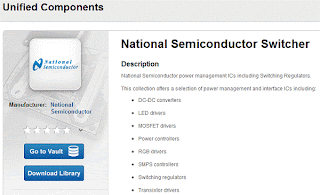Tags:
AltiumLive, content, vault, hobart, library, component, NSC, National Semiconductor, National, TI, Texas Instruments, ADC, Interface, LDO, Switcher, Amplifier, Analog, DAC, Temperature Sensor, Comparator, Voltage Reference
The Content Team is very pleased to announce the release of an update to the National Semiconductor component collection. Now a part of Texas Instruments, National Semiconductor components make up a large part of TI’s analog division.

The update consists of 406 new components and 1376 revised components across the whole National catalogue. The majority of new components were released into Switcher, MiscPower, LDO and Interface families.
Updates include PCB revisions to over 100 footprints, updated datasheets, new URLs and more. Further details of these changes can be found in the Revision Note parameters attached to the revised vault components.
These TI National components can be found in the Content Store under:
Unified Components\National Semiconductor\

All components in this release feature supply chain information from multiple suppliers, including Digi-Key, Mouser, Newark & Farnell. These can best be viewed when browsing the components in the Vault Explorer in Altium Designer 10. Navigate to the Altium Vault to see what’s available.
Full change list by family:
ADC - 36 new components, 3 revised
Amplifier - 39 new components, 58 revised
Analog - 24 revised components
Audio - 4 new components, 214 revised
Comparator - 5 new components, 11 revised
DAC - 2 new components
Interface - 60 new components, 43 revised
LDO - 71 new components, 380 revised
MiscPower - 94 new, 281 revised
OtherParts - 2 new, 2 revised
Switch Caps - 13 revised components
Switcher - 63 new components, 216 revised
Temperature Sensor - 11 new, 52 revised
Voltage Reference - 18 new components, 79 revised
As well as vault-based managed components that are available via Altium Designer’s Vault Explorer, Integrated Library versions of these component families can be downloaded from the AltiumLive Content Store. Look for the ‘Download Library’ button on the left-hand sidebar as you browse through the various vendor families.














